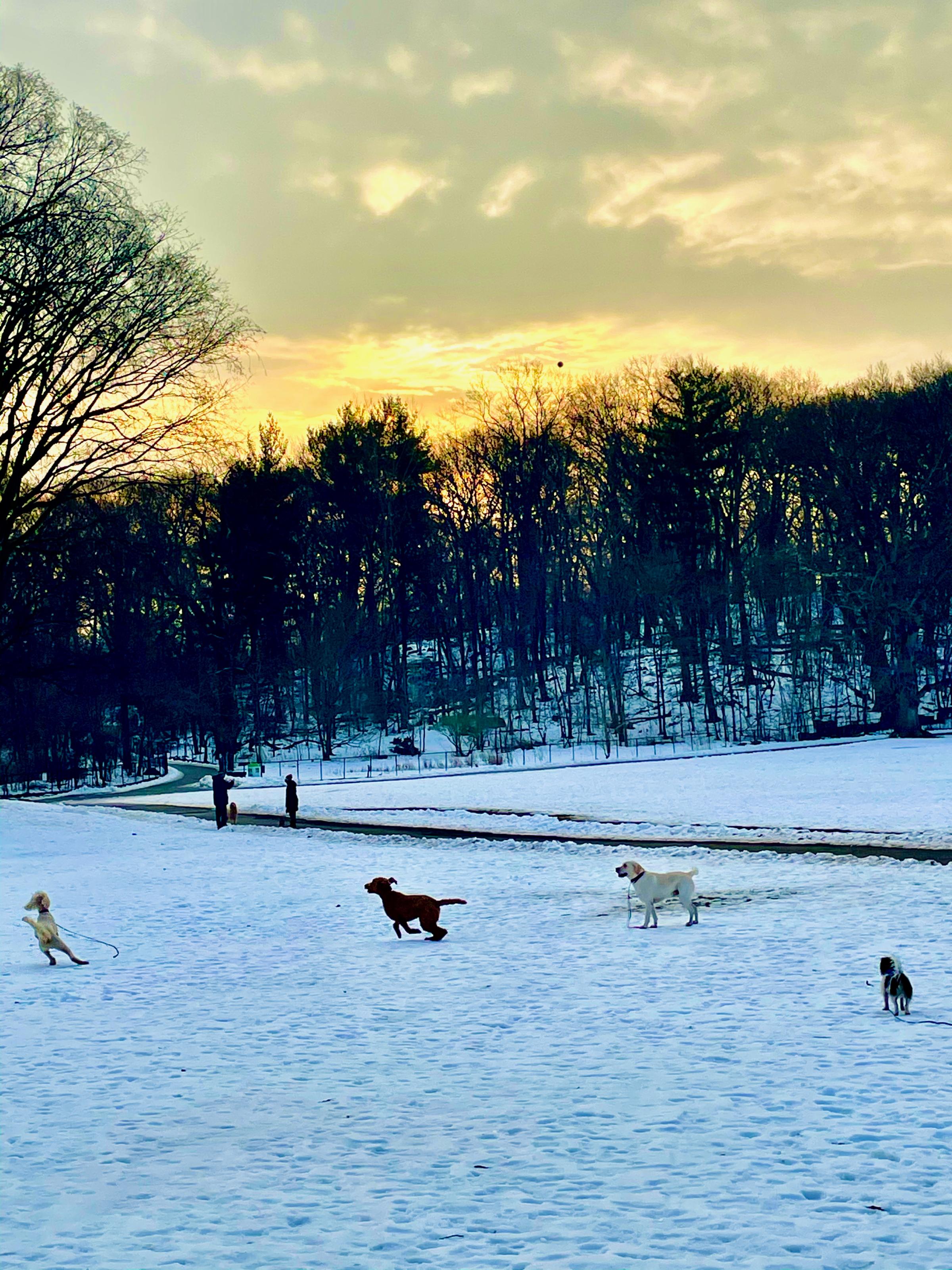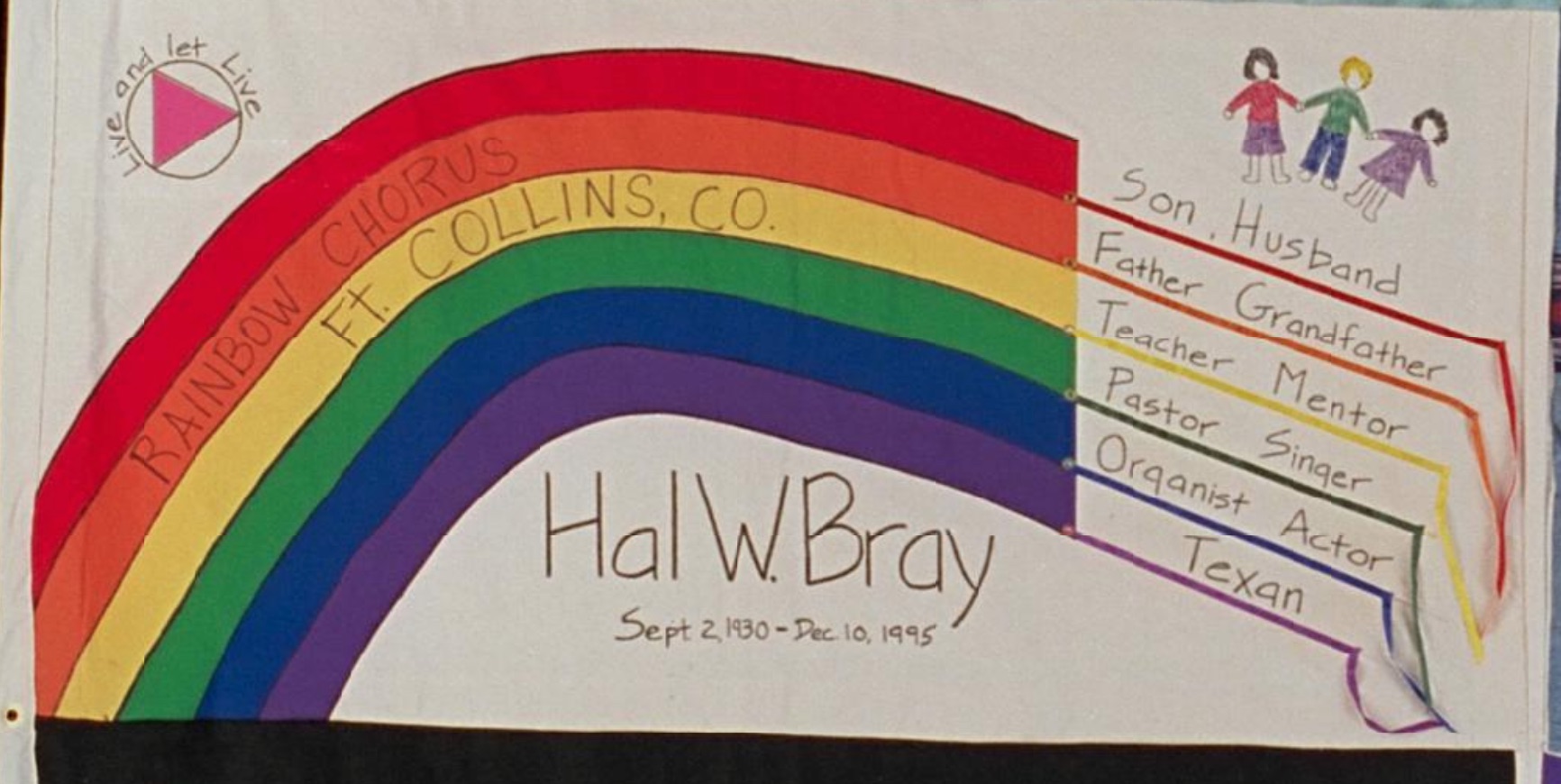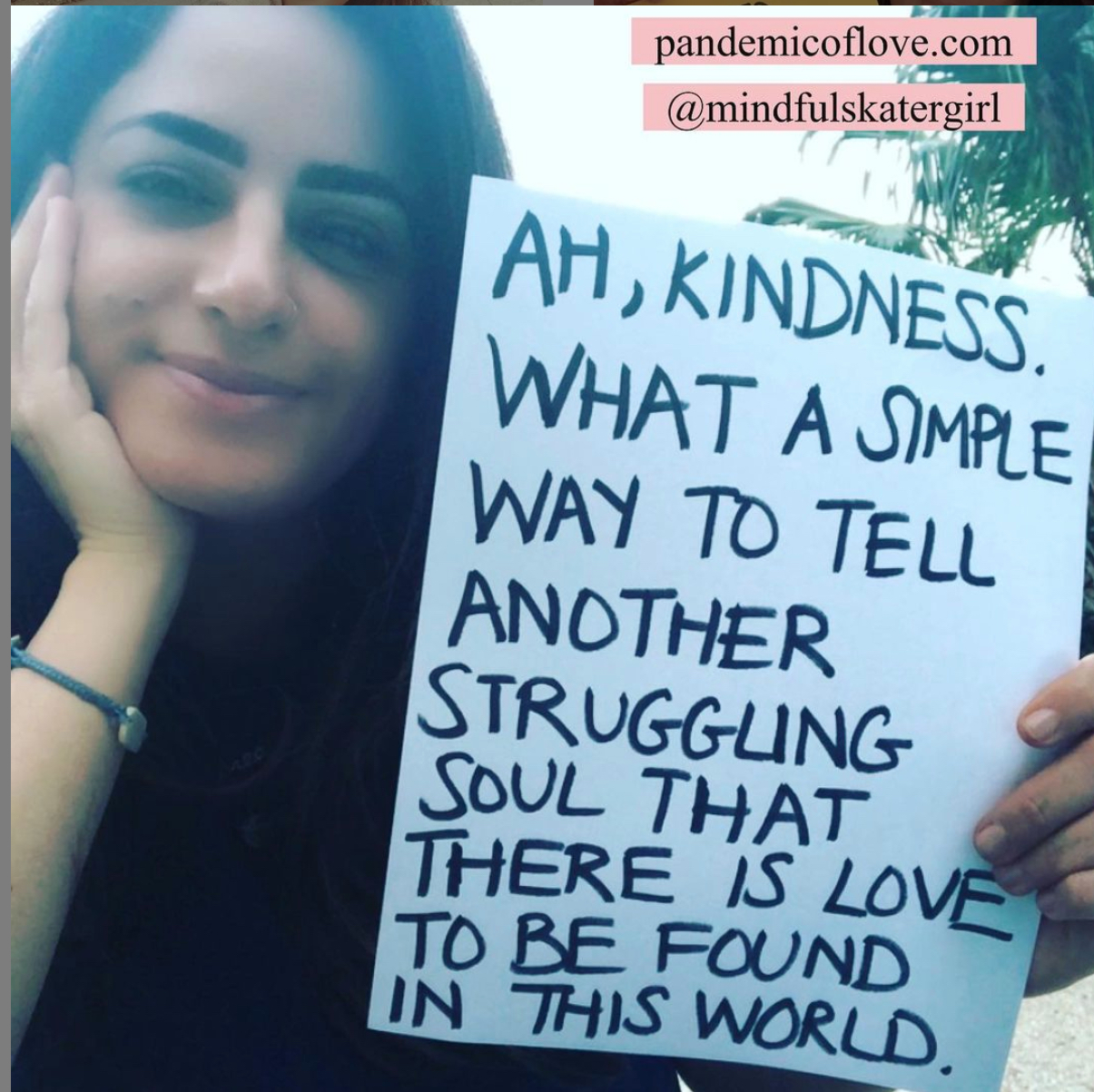
A version of this article appeared in this week’s It’s Not Just You newsletter. SUBSCRIBE HERE to have It’s Not Just You delivered to your inbox every Sunday.
🌞Well hello! I’m so glad you’re here. This week we’ve got a meditation on invisible grief, tips on choosing a mental health app, a no-stress writing workshop suggestion, and stories of community giving.
OUR INVISIBLE UNIVERSE OF GRIEF

Early in the morning at the unruly park by my house, it feels like the before-times. Big dogs gallop by, chasing each other at full speed, nothing between them and the rise of the next icy hill. We, the lumpy, masked, bundled-up humans, look on with envy.
My little round dog trots back to me with the ball some 20 or 30 times. He’s equally and outrageously delighted with every successful retrieval. This is the irreplaceable grace of an ordinary morning.
When we get home, Dog will snuffle and snore at my feet, and I’ll turn on the news, even though I know what’s waiting. It will be another normal day where abnormal, incomprehensibly huge numbers of COVID deaths and hospitalizations update on the screen like grief’s scorecard.
With the new year comes the arrival of vaccines and our growing desperation to move forward, to do something, anything, to escape this endless discomfort and fear. We’re aching to go back to whatever normal was, to leave those awful numbers behind.
But history begs us to pause, to give those lost lives and livelihoods their due, and to understand what’s happened and why. Without that acknowledgment, we lose the gratitude—and lessons—that we need to really move on, to renew, to do better next time. As Elie Wiesel put it:
If we stop remembering, we stop being.
And science has shown that even if we don’t formally process or collectively memorialize these losses, memories and trauma can live on in our DNA.
And yet, how are our brains supposed to understand the scale of what’s happened in the past year? What does 349,000 or 400,000—or maybe eventually 500,000—deaths mean to us, as a country or as people? We’ve grown numb to the magnitude of the catastrophe. This is what happens in any war, especially one that drags on for years and has no one date or city as a reference.
This tragedy has unfurled slowly, invisibly, behind hospital doors where visitors aren’t allowed, and without traditional witnesses, other than medical workers who carry so much of our national sorrow in their bones.
After the attacks of September 11, 2001, a person couldn’t walk a block in New York City without seeing the faces of the dead. There were photos posted everywhere, with flowers and candles, in tribute to the nearly 3,000 women, men, children, firefighters, chefs, traders, mothers, fathers, cleaners and dreamers lost. The whole country felt the absence of the people who had died in New York City; Shanksville, Pennsylvania; and Washington, D.C.
That ubiquitous, spontaneous grief was the first glimmer of the 9/11 Memorial & Museum. And every year since 2001, television networks have broadcast a reading of the names of everyone who died. It takes three hours to read them all.
Now we have a daily 9/11-size death toll, but the flags are not lowered. And think about this: if we were to read aloud the names of the more than 350,000 souls already lost to COVID, it would take about 400 hours. And if we were to create a memorial quilt for the pandemic at a similar scale to the 1.2 million-sq-ft AIDS Memorial Quilt, which has more than 94,000 names, it would occupy nearly 5 million square feet.
I can imagine what that COVID quilt would look like from the air—a limitless blanket covering a wounded land. The AIDS quilt weighs about 50 tons. You couldn’t lay it all out at once if you wanted to. But you can look through the panels digitally one by one, and see these singular stories of another deadly virus and another time stitched together by a community in mourning.
You can also search for someone by name to find their panel, their piece in that mosaic of love—like the father of my dear friend Libba: Hal W. Bray, who died in 1995, just a few heartbreaking months before AIDS treatment drugs became available. We found his name stitched under a quilted rainbow with an array of nouns: pastor and singer, father and mentor, organist and Texan. Hal Bray bequeathed a whole constellation of talents and charm to his daughter, in whose work he still lives.

We’re still in the midst of this epic struggle to prevent more COVID cases and to administer a vaccine faster than a mutating virus can spread. And we don’t know how large a quilt we’ll need. But speaking the names of those lost can remind us why we still have to sacrifice and fight to save every life we can—even now, when we are weary, and when the numbers have lost their meaning. And it is one way to recognize the individual stars in an infinite universe of grief. As Carl Sagan wrote:
For small creatures such as we, the vastness is bearable only through love.
Sites like the COVID Memorial and @FacesofCovid on Twitter are collecting names and stories so that you can read them and post your condolences, or just give your attention to this startlingly broad span of humanity lost. Take a look. Sometimes there’s a whole universe in the simplest Tweet:
RAMON BUSTAMANTE of Southern California died of COVID on Dec. 28. He was a beloved grocery store worker and a single father of five children.
To get essays and advice delivered to your inbox weekly SUBSCRIBE to It’s Not Just You.
COPING KIT ⛱️
⛑️ How To Navigate the ‘Chaotic’ World of Mental Health Apps In the wake of the coronavirus pandemic, curiosity about mental wellness apps has ballooned but finding can be difficult.
✏️ Writing = Healing. NY Writers Coalition is a creative writing community that’s been the heart of my writing life for years. They now offer free virtual workshops that you can join from anywhere. There’s no preparation; you write right in the workshop with optional prompts. No judgment, no stress. It’s an inclusive environment for new and veteran writers. Find NYWC’s winter offerings here.
👩🍳 Cooking for Good If you love to cook for others or are in need of a homecooked meal, visit Lasagna Love, a community organization that prepares and delivers lasagna and more to those who need support.
EVIDENCE OF HUMAN KINDNESS ❤️
Here’s your weekly reminder that creating a community of generosity elevates us all. Take it from Arianna Huffington, who wrote recently about Shelly Tygielski, the founder of Pandemic of Love, and “the extraordinary power of giving and widening the circle of our concern.”

For more inspiration, watch this moving video report from ABC-13 News (WLOS) about Chance Jackson of Asheville, North Carolina who has had a really tough year and was surprised with the gift of a preowned Subaru thanks to the generosity of Pandemic of Love Ashville and Prestige Subaru. Chance reached out to POL for help as a homeless teen last summer, and the organization has been mentoring him ever since. Upon learning the car was his, Jackson told WLOS:
My heart is just overflowing with gratitude. I can’t even find the right words to express how I’m feeling, but I am so grateful and happy ... I feel so loved.
This story is courtesy of Shelly Tygielski, founder of Pandemic of Love, a grassroots organization that matches those who want to become donors or volunteers directly with those who’ve asked for help with essential needs. Visit Pandemic of Love to give or apply for assistance.
COMFORT DOG 🐕
Meet SALLY, the rescue pup submitted by RONNIE whose son HARRY, pictured here, adopted Sally in 2019. Sally has been an essential quarantine buddy for Harry, who, for health reasons, has had to be very diligent about COVID-19 safety protocols over these many long isolating months.
(Send your comfort animal photos, suggestions, or comments to Susanna@time.com)

🌺 Did someone forward you this newsletter? SUBSCRIBE to It’s Not Just You here.
More Must-Reads From TIME
- The 100 Most Influential People of 2024
- The Revolution of Yulia Navalnaya
- 6 Compliments That Land Every Time
- What's the Deal With the Bitcoin Halving?
- If You're Dating Right Now , You're Brave: Column
- The AI That Could Heal a Divided Internet
- Fallout Is a Brilliant Model for the Future of Video Game Adaptations
- Want Weekly Recs on What to Watch, Read, and More? Sign Up for Worth Your Time
Contact us at letters@time.com